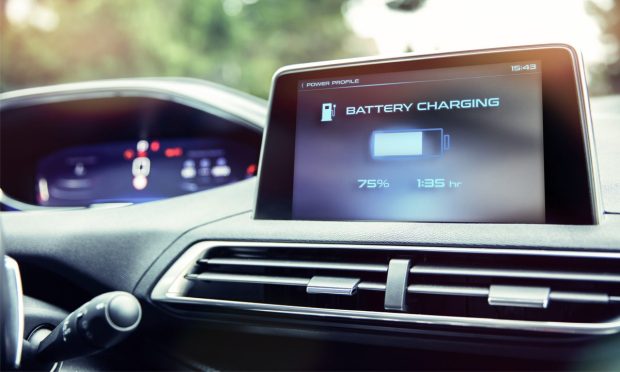Automakers Are Deploying More, Bigger, Better Digital Displays

Driven by auto industry megatrends toward digital cockpits and electric vehicles, automakers are equipping their new vehicles with digital displays that are better, bigger and installed in greater numbers per vehicle.
“Traditionally, the automotive industry lagged consumer electronics when it came to displays. This is now changing rapidly and automotive is driving its own technology roadmap for displays,” Visteon President and CEO Sachin Lawande said Thursday (April 28) during the company’s quarterly earnings call.
Visteon said its production volume of digital cockpit components for vehicles was up 11% even as that of new vehicles was down 4%. Digital clusters, cockpit domain controllers and displays recorded growth. Infotainment systems were down, though still outperforming vehicle production.
Offering an Improved Experience to Travelers
During the call, Lawande offered examples of the global, industry-wide trend toward larger displays. For one, Mazda has historically offered 8-inch digital displays in its vehicles, but on new models, it’s offering 10-inch and 12-inch digital displays.
Lawande also told of an unnamed Japanese automaker that is preparing to launch a multiscreen display module under one seamless cover lens that will be available with display sizes of 24 inches and 28 inches. This will be available in 2024 in multiple vehicles.
“Consumer demand for [advanced driver assistance systems] and connected services has resulted in OEMs using larger displays in the cockpit to offer an improved experience to the traveler and passengers,” Lawande said.
See also: Automakers Deploy NFTs to Reach Younger, Tech-Savvy Consumers
Taking Design Cues From Smartphones, Tablets
Automotive displays are also getting better. A presentation released in conjunction with the call highlighted several emerging display trends, including sunlight readability, large seamless display areas, distraction-reducing displays and low power consumption for electric vehicles.
“Display trends driven by consumer electronics products such as smartphones and tablets have shaped some of the trends in cockpit displays, including narrow borders and high perceptual quality,” Lawande said.
In addition, the auto industry is continuing its shift to digital clusters, and digital clusters are migrating into mass-market vehicles. Lawande said during the call that 40% of the clusters Visteon sells are now digital clusters, “which provides a long runway of future growth as our customers continue to fully digitize their cockpits.”
Prioritizing Production of Higher-End Vehicles
In the presentation, the company said factors impacting automotive industry production include the conflict in Ukraine, the pandemic-related lockdowns in China and semiconductor supplies — though the latter has improved with key suppliers during the quarter.
At the same time, because vehicle production is limited, automakers are putting their efforts and the available chips into higher trim level vehicles — and those vehicles tend to have more digital displays.
“In the supply-limited environment, the OEMs prioritized the production and sale of the higher-level trims to maximize their sales and revenue,” Lawande said.
Continuing Toward a Digital, Connected, Electric Future
Looking ahead to the rest of the year, Visteon said in the presentation that it expects the demand for digital cockpit products to continue to grow faster than the new-vehicle market. The demand for digital cockpit components will continue to be impacted by automakers prioritizing higher trim level vehicles, as well as new product launches.
“We are excited about the industry’s digital, connected and electric future and are confident that Visteon’s product portfolio will continue to facilitate these key industry trends,” Lawande said.
Related: Legacy Mobile Players Pursue New Digital Chassis and Cockpit Collaborations
